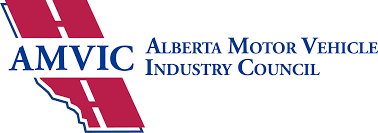A Beginner’s Guide to Leveling a Camper
 Of all the procedures for setting up a campsite, few are more important than leveling your camper. If you don’t have a hydraulic leveling system, you’ll have to do the leveling with landing gear or blocks, but thankfully, it’s a simple process! Knowing how to level a recreational vehicle is vital because nobody wants to sleep on a bed that feels like it’s turned sideways. We want everyone in the camping community to have a good time out there, so we created this guide that explains how to safely and effectively level a camper.
Of all the procedures for setting up a campsite, few are more important than leveling your camper. If you don’t have a hydraulic leveling system, you’ll have to do the leveling with landing gear or blocks, but thankfully, it’s a simple process! Knowing how to level a recreational vehicle is vital because nobody wants to sleep on a bed that feels like it’s turned sideways. We want everyone in the camping community to have a good time out there, so we created this guide that explains how to safely and effectively level a camper.
Landing Gear or Blocks?
There are two tools you can use to level a camper: landing gear or blocks. The landing gear is a little more convenient, but both methods get the job done just as well. Before you start leveling, your first step will be finding an even ground. If you have a choice of campsite, look around for the one that has the most level parking surface, because that will save you a lot of work.
Using Landing Gear
Most rigs are equipped with landing gear, so if you have this convenience, you’ll be able to lower the landing gear to the ground using a simple hand crank. Lower the gear to the ground on all sides, and then check your level. If your level is off a little, use a jack to lift the side of the trailer that’s too low, and put a block of wood that’s flat on both sides under the landing gear.
Before you release the jack, make sure you chock the nearest wheel on the RV. Otherwise, lowering on the block could cause your wheel to move forward, which would make your trailer abruptly jerk when the landing gear slips off the block. Then, lower the jack and check your level again. If it’s still off, repeat this process, adding extra blocks until you get the side to the desired height.
Using Blocks
If you don’t have landing gear, you can still level your camper just as effectively with blocks. These are more stable, easier to use, and don’t harm your tires as much as a wooden block would. Once you’re at the campsite, park your rig in the place where you will want it to stay. Draw a line by the tires, as this is where you will place your blocks to raise the necessary tires. While still in position, check the level to see which tires need to be raised.
If the front is low, you need to raise both tires, and if one side is low, raise both the tires on that side. Then, back the camper up, place blocks in the tire space by the line that you had drawn, and pull the trailer forward again, onto the blocks. Check the level, and continue adding blocks if you need to. Once it’s level though, chock the tires and then unhitch the rig. After that, you’re ready to camp!
If you would like more information, or simply want to get a great camper for your next trip, visit Schwab's RV World in Leduc, AB. We welcome all our patrons visiting us from Edmonton.

